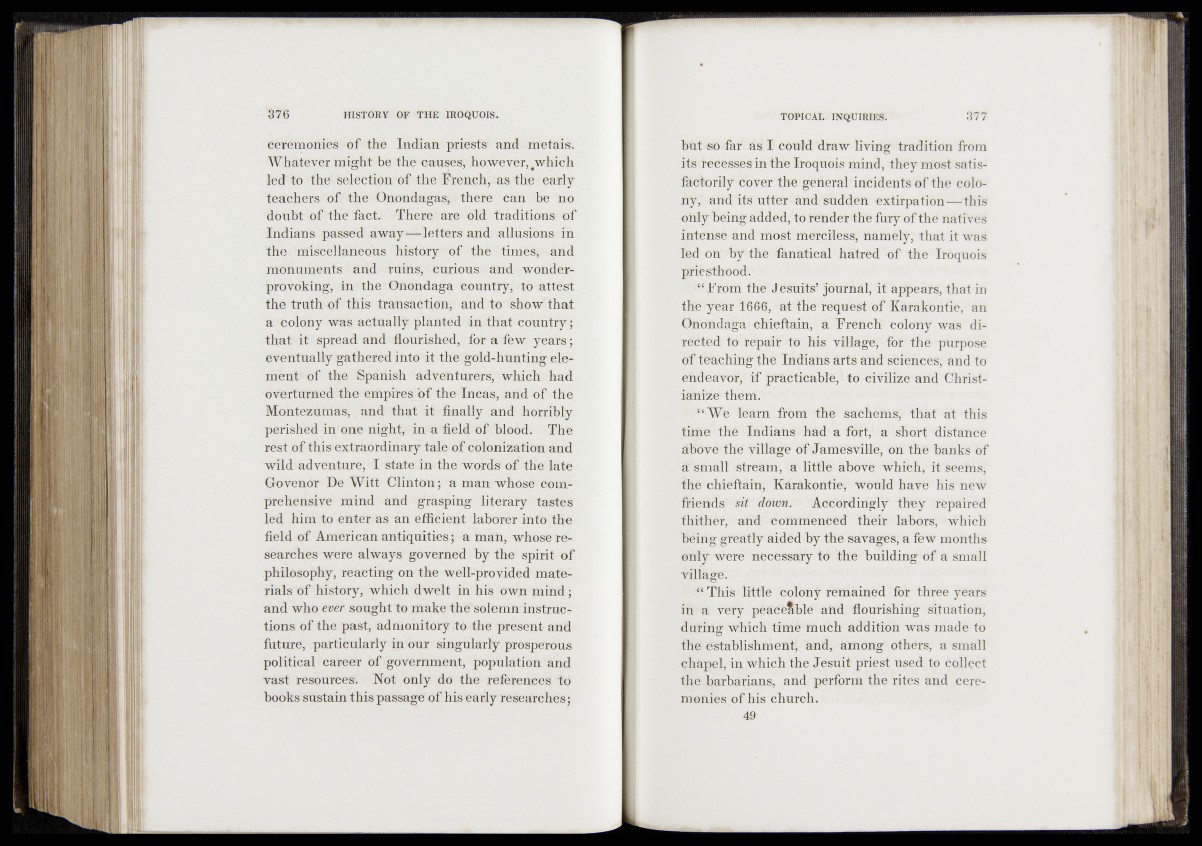
eerëmoniéö of tfeè Indian priests and metais.
Whatever might be the causes; however, which
led" to the' selection of the French, as the early
teachers of the Onondagas^ there can he no
doubt Of the fact. There are old traditions of
Indians passed away ^-letters and allusions in
the miscellaneous history of the timeè, and
monuments " arid ruins,' curious and wonder-
provoking, in the Onondaga country, do-attest
the truth-of this transactions and to ihow^that
a eolony was actually planted -in that coUntry|:
that it spread and flourished, for a few years*;
eventually gathered into it the gold-hunting el®**
mént of the SpÉtiish 'adventurers, which had
overturned the empires bf the Ineab,,and Of the-
Monteziimas, and that it disally and horribly
perished in one night, Tuva field of blood. The
rest of this extraordinary talè of colonization and
"wild adventure, Ï state in the words of the late
GoUenor De Witt ClintOn j U. man Whose comprehensive
mind and grasping literary tastes
led him to enter as an efficient laborer into the
field of American antiquities $ a man, whose researches
were always governed by the spirit of
philosophy, reacting on the well-provided mate1-
rials of history, which dwelt in his own mind;
and who sought to make thU'sQlemn instrubr
tions of the past, admonitory to the present and
future, particularly in bur singularly prosperous
political career of government, population and
vast resources. Not only do the references to
hooks sustain this passage of his early researches;
bât SO far as I could draw living tradition from
its feuessef in the Iroquois mind, they most satisfactorily
cover the general incidents of the colony,'
and its fitter- and sudden extirpation—this
only being added, to render the fury of the natives
fefcehse and most merciless, namely, that it was
led on by the Fanatical hatred of the Iroquois
priesthood.
- '•‘Ftom the Jésuits’ journal, it appears, that in
the year 1666, at the request of Karakontie, an
Ononddfa chieftain, a French colony was di-
'’ÿf&tbd to repair to his village, for the purpose
Of teaching the Indians arts and sbiêncès; and to
endeavor, if practicable, to civilize and Christianize
them.1
“Wë learn from the sacheriis, that at this
time thé Indians had a fort, a short distance
Above the village of Jamesville, on the banks of
A small stream, a little above which, it seems,
the chieftain, Kârakontie, would have his new
friefids sà down. Accordingly" they repaired
thither, and Commenced their labors, which
being greatly aided by the savages, a few months
only Were necessary to the building of a small
village.
** This little colony remained for three years
in a very peaceable and flourishing Situation,
during which time much addition was made to
the estabhshffient, and, among others, a small
chapel, in which the Jesuit priest used to collect
the barbarians, and perform the rites and cere-
m onies of his church. •
49